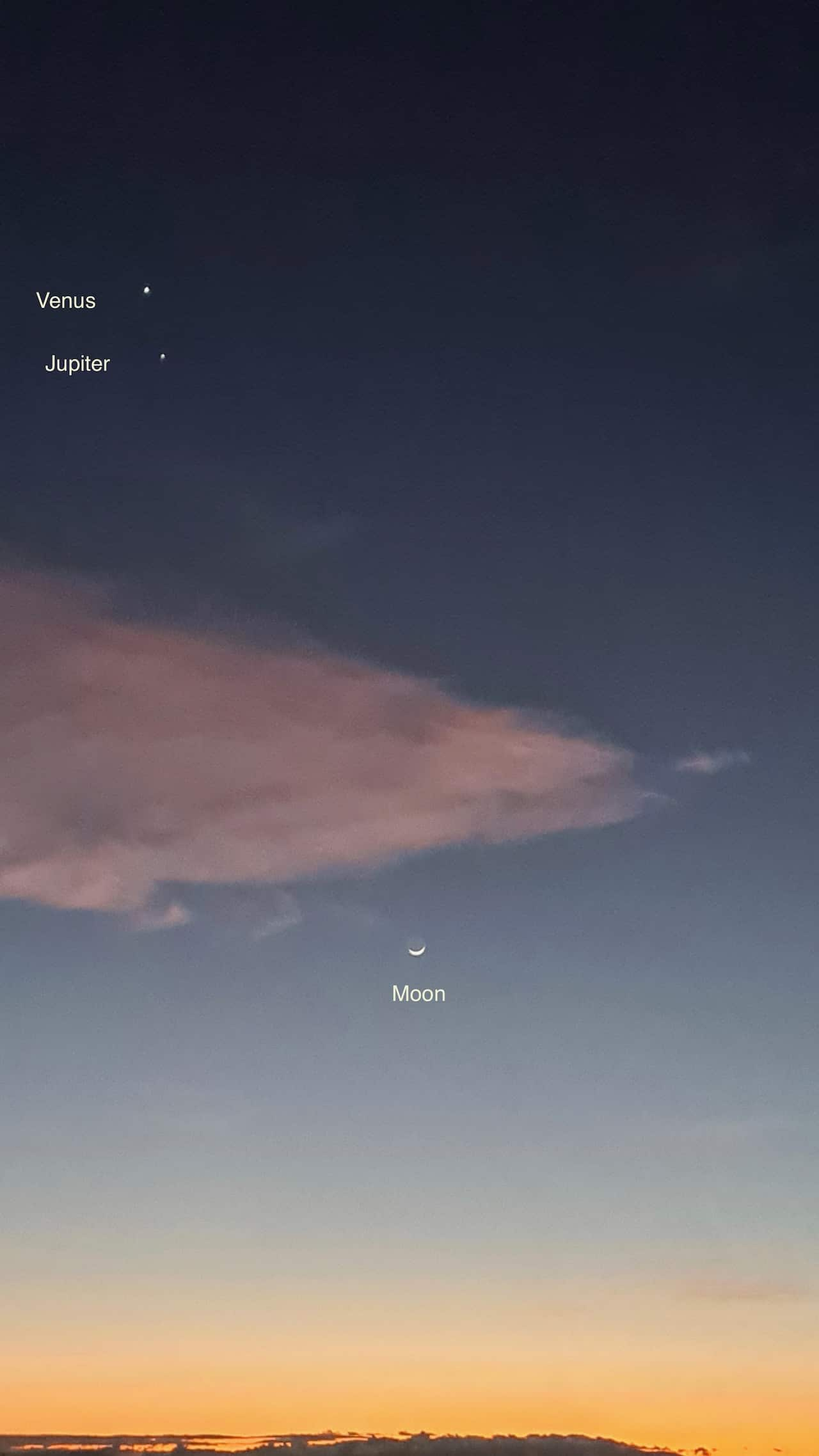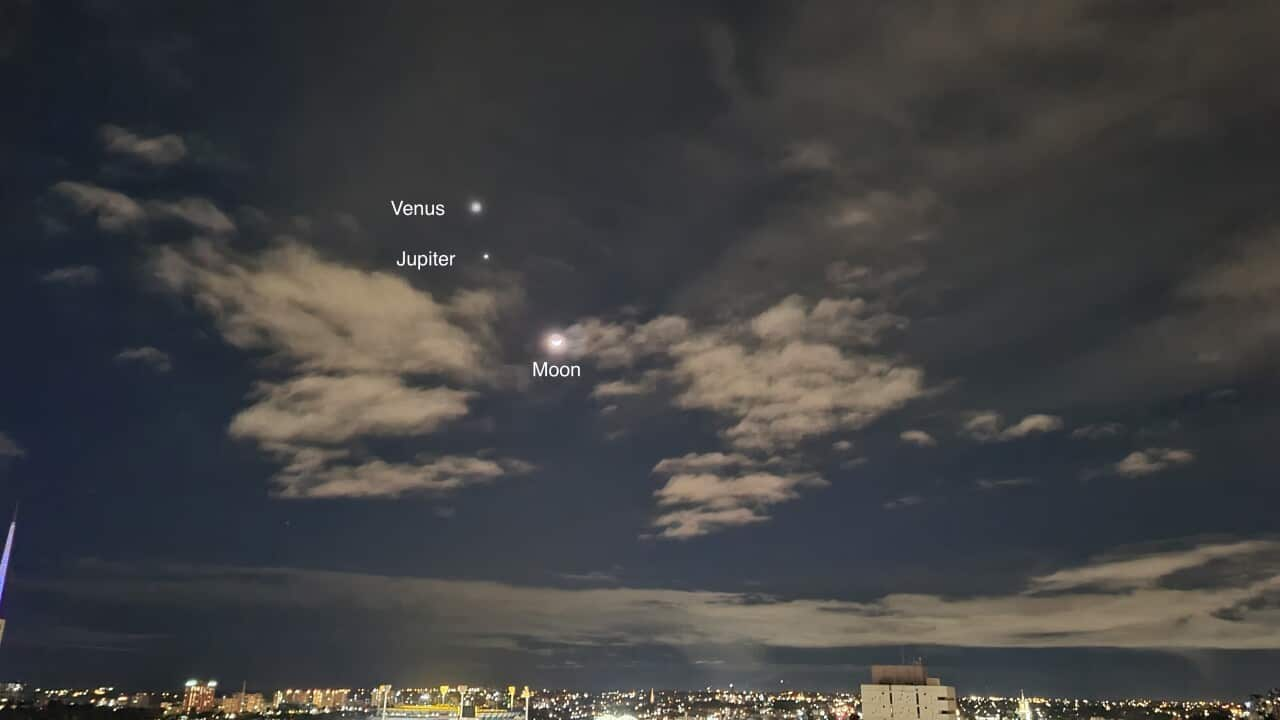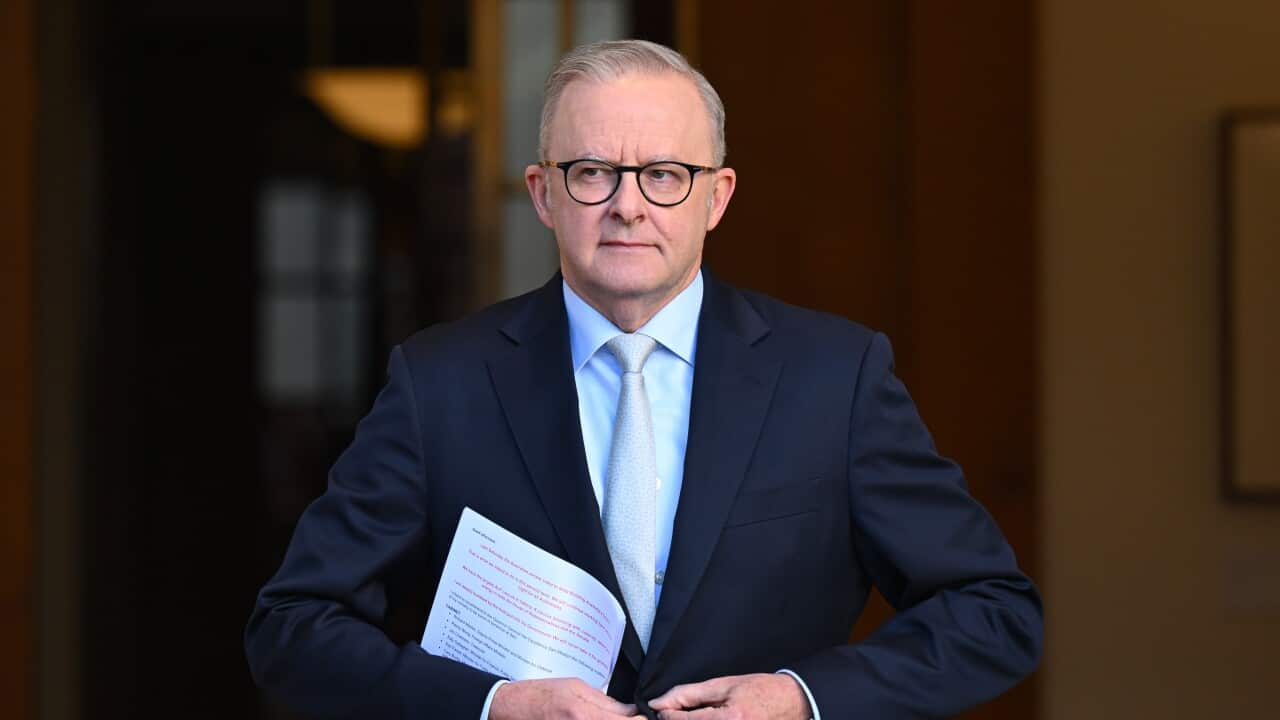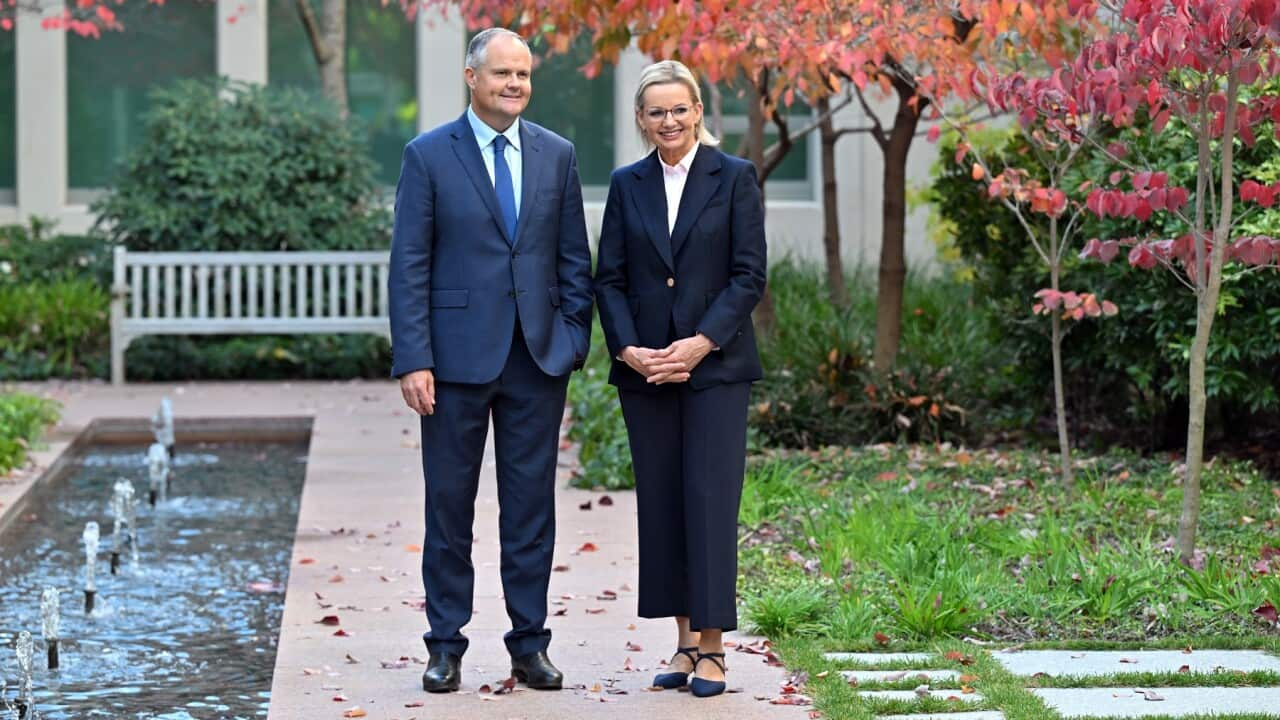Dr Nikhel Gupta, a research scientist at CSIRO’s Space and Astronomy Perth, told SBS Hindi that the conjunction will be an “amazing event”.
”It’s going to be very special as the two brightest planets, Venus and Jupiter, will come exquisitely close,” he said.
Highlights:
- In the southern hemisphere, Saturn, Mars, Venus and Jupiter are oriented vertically in the sky while in the northern hemisphere, their orientation is horizontal
- Venus and Jupiter will be about 0.5 degrees apart on 30 April
- Venus is the second and Jupiter is the fifth planet outward from our sun
Dr Gupta explained that when celestial objects appear near one another in our sky, the phenomenon is called a conjunction.
“They appear very close in space in our line of sight due to the angle.”
He added that conjunctions happen frequently between the planets because they orbit around the sun in nearly the same ecliptic plane, hence coming into alignment and appearing to form a straight line in the sky.

The four planets Saturn, Mars, Venus and Jupiter are aligned in a straight line on April 24, 2022 at 4.40am visible from Southbank, Melbourne, Australia Source: SBS/Anita Barar
Rare alignment of four planets
In the final week of April, four planets - Saturn, Mars, Venus and Jupiter - will appear aligned across our eastern sky.
This is a rare celestial phenomenon.
Dr Gupta said, “We call it the ‘planetary parade’. As far as we know, these four planets were last seen in alignment in 947 AD.”
This ‘planetary parade’ is visible in both the southern and northern hemispheres.
“Mars completes one revolution around the sun in around two years, Saturn takes about 29 years, Venus takes about 225 days, and Jupiter takes about 12 Earth years to make a complete orbit around the sun,“ Dr Gupta explained.
Listen to Dr Nikhel Gupta explaining the planetary conjunctions:
LISTEN TO

Bright sights: Rare 'planetary parade' and Venus-Jupiter conjunction light up sky
SBS Hindi
13:02
The order of the planets in the solar system from nearest to the sun are: Mercury, Venus, Earth, Mars, Jupiter, Saturn, Uranus, and Neptune.
“Planetary alignments and conjunctions are an interesting and amazing event to witness, and they don't happen very often. It is a good opportunity for children interested in science to witness this rare phenomenon as planets are visible to the naked eye if the sky is clear. Look towards the east and spot Saturn on top, followed by Mars, Venus and Jupiter,” Dr Gupta added.
Since the sun’s path in our southern hemisphere sky is at a steeper angle to the horizon, these planets are visible higher above the horizon an hour or two before the sunrise.
Explaining the phenomenon of conjunction, Dr Gupta said an inferior conjunction occurs when the planet is passing between the Earth and the sun, and in a superior conjunction, the sun is between the planet, and the earth. All three bodies are nearly in a straight line for conjunction.

Jupiter and Venus the two brightest planets and the Moon as they appear on April 28, 2022 from Southbank, Melbourne Australia at 5.30 am. Source: SBS/Anita Barar
The two brightest planets in the night sky, Jupiter and Venus, will be in conjunction between 30 April and 1 May in the pre-dawn sky. The two planets will appear strikingly close.
As stargazers may have observed, since 24 April, the planets have been appearing closer with each passing day.
Dr Gupta said Jupiter and Venus were about four degrees apart on 26 April, and on 27 April, they were about three degrees apart.
“It was quite an interesting sight as a crescent moon passed below Mars on 26 April and made a triangular glare with Jupiter and Venus on 27 April,” added Gupta.
He further explained, “In Australia, on 30 April, when the two planets are in conjunction, the distance between the two will be about 0.5 degrees. They will appear so close as if touching each other. Venus will be positioned above Jupiter.
"On 1 May, their position will be reversed. Jupiter will appear higher in the sky than Venus and they would be about 0.6 degrees apart. The two planets thereafter will continue to move further apart as the days go on."

Planet Venus and Jupiter and the crescent Moon on 29 April from Southbank, Melbourne Australia at 6:00am. Two planets will be in conjunction on 30 April 2022. Source: SBS/ Anita Barar
Though the two planets appear so close, they are actually quite far apart in space.
Venus is about 67.2 million miles away from the sun, while Jupiter is 484 million miles away. Earth is about 93 million miles from the sun.
Since the moon will not be visible on 30 April, these two bright illuminating planets will be easy to spot above the eastern horizon if the sky is clear.
The conjunction can be seen across the world in the pre-dawn hours of the morning by looking east or toward the sunrise.
Why is it special?
Though Jupiter and Venus come in conjunction once a year, their position or closeness is not the same. Last year, they came close on 11 February in the early dawn hours. They were just over the horizon, hence, not everyone could see them.
“This year the two brightest planets will be very close and above the horizon. The distance between them will be about half a degree, which is the diameter of a full moon. Because of their glare, it would appear as one very bright glow. This will make it special,” said Dr Gupta.
The two brightest planets will cross paths again in early March of 2023.
Listen to the podcast in Hindi by clicking on the audio icon inside the picture at the top.





